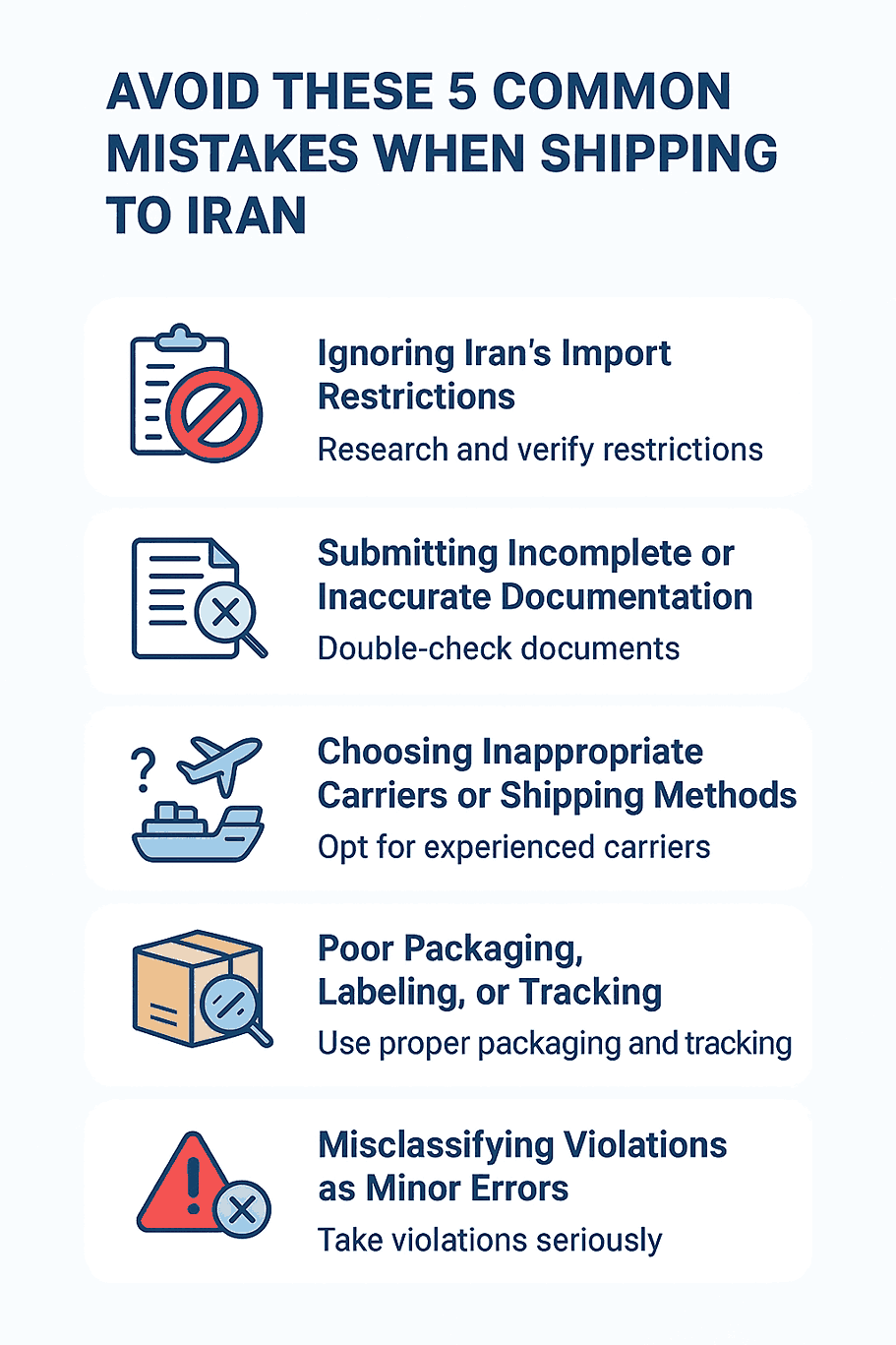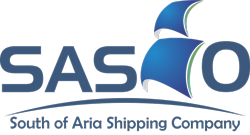1. Ignoring Iran’s Import Restrictions
A critical mistake in shipping to Iran is failing to comply with Iran import restrictions, which can lead to goods being declared abandoned or confiscated. Under Iran’s Customs Law (amended 2011, Articles 33–37), items like alcohol, pork products, firearms, media contrary to Islamic principles, or goods requiring special permits (e.g., pharmaceuticals, telecommunications equipment, or drones) are restricted or prohibited. Failure to verify these restrictions can result in customs holds, financial penalties, or goods being transferred to the State-Owned Properties Organization after a four-month unclaimed period. Common causes include lack of awareness, incomplete permits, or logistical delays, which can lead to abandonment, auctions, or destruction of perishable items.
Practical Solution:
Research Iran customs regulations using the Islamic Republic of Iran Customs Administration (IRICA) or Iran’s Customs Electronic Portal (EPL). Ensure all required permits, such as those from the Ministry of Health for drugs, are secured before shipping. Partner with the best shipping companies in Iran, like SASCO, to verify item eligibility and streamline compliance.
To find practical solutions and more explanations, read “Abandoned Goods in Iran’s Customs: A Practical Guide by SASCO.”
2. Submitting Incomplete or Inaccurate Documentation
In international shipping companies Iran works with, customs clearance depends heavily on accurate paperwork. Errors like incorrect HS (Harmonized System) codes, under-declaring shipment values to reduce duties, or missing essential documents (commercial invoices, packing lists, certificates of origin, import licenses) can cause delays, seizures, or fines.
Some goods, like mobile phones, require the importer’s national ID number; others, like seeds or pharmaceuticals, may need ministry-issued permissions.
Practical Solution:
Work closely with your shipping company in Iran or a local customs broker to ensure every document is correct and complete. Double-check HS codes in NTSW, list the true value of goods, and attach all required permits. This small step can save weeks of delay.
For detailed information on the customs documents required for Iran, click here.
3. Choosing Inappropriate Carriers or Shipping Methods
Selecting the wrong carrier or shipping method is a common error that can derail shipping to Iran. Major carriers like UPS, FedEx, and DHL often do not offer direct services to Iran due to sanctions on shipping to Iran, leading to rerouting issues or non-delivery. Choosing an inexperienced carrier or mismatched method—such as air freight for bulky items or ocean freight for urgent shipments—can result in unexpected costs, delays (customs clearance can take 5-10 days), or damage to goods.
For instance, air freight is faster (5-7 days for express) but costly, while ocean freight (10-15 days standard) is more affordable for heavy cargo but slower. Selecting a method that doesn’t align with your shipment’s urgency or size can inflate the cost of shipping to Iran or lead to logistical complications.
Practical Solution:
Opt for freight forwarding to Iran through experienced providers like SASCO, which use compliant routes. These logistics services for Iran have established networks and expertise in navigating sanctions and customs protocols. Before shipping, consult with your forwarder to match the method (air, sea, or multimodal) to your cargo’s size, weight, and urgency. For example, use air freight for time-sensitive documents and ocean freight for bulk Iran products. Request real-time tracking to monitor progress and avoid delays.
4. Poor Packaging, Labeling, or Tracking
Inadequate packaging for international shipping or incorrect labeling is another frequent mistake when shipping to Iran. Poorly packaged goods are vulnerable to damage during transit, especially given the multiple handling stages in international logistics. Incorrect labeling—such as wrong addresses, missing postal codes, or unclear content descriptions—can lead to customs rejections or failed deliveries. Additionally, neglecting to track shipments means missing critical updates, such as customs holds, which can delay resolution and extend transit times.
For example, fragile items require robust packaging to withstand long journeys, and labels must clearly indicate handling instructions (e.g., “Fragile” or “This Side Up”). Without proper tracking, senders may not notice delays until it’s too late, causing frustration for both sender and recipient.
Practical Solution:
Use high-quality, export-grade packaging materials tailored to your cargo type. For documents, use reinforced envelopes or waterproof pouches; for goods, include cushioning like bubble wrap or foam. Ensure labels are accurate, legible, and include all required details, such as recipient address and customs forms. Partner with a shipping company in Iran that offers tracking services,to monitor your shipment’s status and address issues promptly. Regularly check tracking updates and maintain communication with your carrier to resolve customs holds quickly.
5. Misclassifying Violations as Minor Errors
A dangerous mistake is treating unintentional errors, such as incorrect tariff codes or undeclared restricted items, as minor oversights. In Iran, such errors can escalate to smuggling accusations, especially if they involve restricted goods, leading to severe consequences. Not leveraging tools like Iran’s NTSW or consulting local customs brokers exacerbates this risk. This mistake often stems from a lack of awareness about Iran customs regulations and the need for precise compliance.
Solution: Treat all documentation and compliance steps with utmost seriousness. Use Iran’s NTSW to verify tariff codes and permit requirements before shipping. Engage logistics services for Iran with local expertise, such as SASCO, to conduct compliance audits and ensure adherence to regulations. If unsure, consult primary sources like IRICA or hire a customs broker to review your shipment details. For high-value or regulated goods, consider cargo insurance to mitigate financial risks.

Conclusion
Shipping to Iran requires careful planning to navigate its unique challenges, from sanctions on shipping to Iran to complex Iran customs regulations. By avoiding these five common mistakes—ignoring restrictions, submitting incomplete documentation, choosing inappropriate carriers, neglecting packaging and tracking, and misclassifying violations—you can ensure a smooth and compliant shipping process. Partnering with experienced international shipping companies in Iran, using digital tools like NTSW, and verifying regulations with primary sources like IRICA or OFAC will save time, reduce the cost of shipping to Iran, and prevent delays. Whether you’re sending a ship package to Iran or managing freight to Iran, these strategies will help you achieve reliable, cost-effective deliveries.







